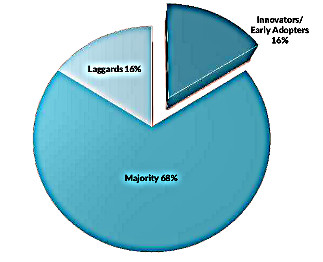Sustainable, restorative, regenerative – what’s in a name?
The distinctions we make in the language we use are really important. Language is what we use to invent our future. In the evolving language of sustainability, the shift towards a regenerative approach reflects not just new strategies, but a new world view that offers enormous opportunity.
I’m better with words than pictures, so it was great to find this diagram by Bill Reed late last year. It helps explain the different perspectives and the thinking behind them.
Dimensions in sustainability practice…
The horizontal axis reflects the emerging shift in the technologies that we use to make the products and services we use. This shift from 19th and 20th century “heat and beat” methods to bio-based technologies that process renewable materials at room temperature is moving out of laboratories and into commercial practice.
The vertical axis reflects an even more important shift – the shift in the way we think about our relationship with the ecosystems that keep us alive. It’s an outside-in shift where we give up the pretense that we can operate independently of the ecosystems that keep us alive and acknowledge that we are deeply embedded within a complex web of abundant, interdependent systems. This is a very different discussion than those of the 20th century around “environmental sustainability” or “corporate social responsibility”.
Following the diagonal green arrow to the upper right, our future wealth will come from applying Integrative Design to leverage nature’s 3.8 billion years of design experience and systems thinking. Along with our biotechnology know-how and the computing power for complex calculation, we’re also developing the soft skills in communication, collaboration and systems thinking to turn our ideas into commercial reality.
Regeneration – nature’s unique capability…
My exploration of regenerative thinking came about in conversation with leading Ontological Practitioner Alan Sieler. We were talking about the application of Ontological Coaching to sustainability, and I quoted Ray Anderson’s 1994 declaration that he wanted his multinational company Interface to become the world’s first restorative business.
Our conversation took place a year or so after fiercely destructive local wildfires and I had been driving through the regenerating bush, marveling at the way new growth was emerging from blackened tree trunks. To me, the word “restorative” failed to acknowledge nature’s enormous complexity and capability. The shift to the word regenerative flowed elegantly, shifting beyond obligation and human-centered “repair thinking” to a different paradigm.
In this new paradigm, we start from the position that we are PART of nature. We’re not external “fixers” – we’re a permanent, ongoing part of the finite ecosystem that keeps us alive. From this new understanding, we look for strategies and technologies that support nature’s capacity to regenerate ecosystems and ways to implement them that strengthen and restore human communities. We leverage “the magic of AND” in exciting, fulfilling new ways.
Move your head beyond “sustainability”…
If you’ve been wondering how we’re going to get through the coming century, join the increasing number of people who’ve given up on just being “sustainable” and are getting on with turning regenerative thinking into creative, successful realities. The story of Chido’s Mushrooms is just one of many.
Don’t let an emotion heritage of learned helplessness and habitual anxiety freeze you into inactivity. There’s much more fun to be had practicing radical hope instead:
- Get your head around the business development principles of Blue Economy and Circular Economy thinking;
- Learn to see the complexity of social, commercial and ecological systems; and
- Develop the emotional and communication skills at the heart of successful innovation adoption.






